Showing Spotlights 49 - 56 of 338 in category All (newest first):
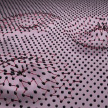 The 1T polymorph of TaS2 is one of the prominent members of the quasi-2D van der Waals materials that reveal several charge-density-wave (CDW) phase transitions in the form of resistivity changes and hysteresis. However, despite numerous attempts, the electrical gating of the CDW phase, which is needed for many practical applications, has remained elusive - until now. Researchers report electrical gating of the CDW quantum phases in h-BN/1T-TaS2.
The 1T polymorph of TaS2 is one of the prominent members of the quasi-2D van der Waals materials that reveal several charge-density-wave (CDW) phase transitions in the form of resistivity changes and hysteresis. However, despite numerous attempts, the electrical gating of the CDW phase, which is needed for many practical applications, has remained elusive - until now. Researchers report electrical gating of the CDW quantum phases in h-BN/1T-TaS2.
Nov 1st, 2022
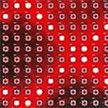 Researchers demonstrate a multitarget real-time trajectory tracking system by using a time-division position sensitive detector (TD-PSD) system by employing a graphene-silicon Schottky heterojunction. The system allows for multi-target real-time trajectory tracking with a maximum image output frame rate of up to 62 000 frames per second (which is superior to commercial optical high-speed motion capture systems of about 1000 frames per second). This breaks the bottleneck in precise high-speed trajectory tracking and multi-target detection of traditional position sensitive detectors.
Researchers demonstrate a multitarget real-time trajectory tracking system by using a time-division position sensitive detector (TD-PSD) system by employing a graphene-silicon Schottky heterojunction. The system allows for multi-target real-time trajectory tracking with a maximum image output frame rate of up to 62 000 frames per second (which is superior to commercial optical high-speed motion capture systems of about 1000 frames per second). This breaks the bottleneck in precise high-speed trajectory tracking and multi-target detection of traditional position sensitive detectors.
Oct 10th, 2022
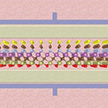 Researchers show how MXenes' rich chemistry can be used to create doping-free 2D transistors with intrinsically low resistive contacts while maintaining balance mode operation. With a suitable functional termination, MXenes can become a semiconductor or a metal with a different work function. The researchers exploit this unique property of MXene to propose a Schottky barrier transistor, which can be implemented with a bare MXene by converting it to a semiconductor in the channel region with strategic functionalization.
Researchers show how MXenes' rich chemistry can be used to create doping-free 2D transistors with intrinsically low resistive contacts while maintaining balance mode operation. With a suitable functional termination, MXenes can become a semiconductor or a metal with a different work function. The researchers exploit this unique property of MXene to propose a Schottky barrier transistor, which can be implemented with a bare MXene by converting it to a semiconductor in the channel region with strategic functionalization.
Sep 27th, 2022
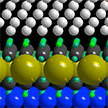 Two-dimensional (2D) semiconductors, like transition-metal dichalcogenides, have become a competitive alternative to traditional semiconducting materials in the post-Moore era, and caused worldwide interest. However, before they can be used in practical applications, some key obstacles must be resolved. One of them is the large electrical contact resistances at the metal-semiconductor interfaces. Researchers have proposed a brand-new contact resistance lowering strategy of 2D semiconductors with a good feasibility, a wide generality and a high stability.
Two-dimensional (2D) semiconductors, like transition-metal dichalcogenides, have become a competitive alternative to traditional semiconducting materials in the post-Moore era, and caused worldwide interest. However, before they can be used in practical applications, some key obstacles must be resolved. One of them is the large electrical contact resistances at the metal-semiconductor interfaces. Researchers have proposed a brand-new contact resistance lowering strategy of 2D semiconductors with a good feasibility, a wide generality and a high stability.
Sep 5th, 2022
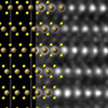 Researchers have developed a new method to create interlayered bulk materials, comprising atomically-thin layers with highly diverse electronic properties - from insulating to superconducting. The atomistic quantum mechanical simulations and electron microscopy imaging illuminate the origin of this spectacularly diverse behavior between adjacent layers of a single material. Its alternating layered structure makes this material a true 2D superconductor in bulk form and opens a plethora of intriguing questions related to the effect of interlayer coupling on the superconducting behavior.
Researchers have developed a new method to create interlayered bulk materials, comprising atomically-thin layers with highly diverse electronic properties - from insulating to superconducting. The atomistic quantum mechanical simulations and electron microscopy imaging illuminate the origin of this spectacularly diverse behavior between adjacent layers of a single material. Its alternating layered structure makes this material a true 2D superconductor in bulk form and opens a plethora of intriguing questions related to the effect of interlayer coupling on the superconducting behavior.
Aug 30th, 2022
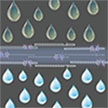 Graphene-based membranes have attracted considerable attention as promising candidates for new filtration technologies for filtering out nanoparticles, organic molecules, and even small inorganic salt ions. Putting a nature-inspired spin on the fabrication of high-performance graphene membranes for tricky oil/water separations - even in stable emulsions - researchers have demonstrated a graphene nanomesh membrane that possessed high hydrophilicity, super-oleophobicity and low oil adhesion underwater.
Graphene-based membranes have attracted considerable attention as promising candidates for new filtration technologies for filtering out nanoparticles, organic molecules, and even small inorganic salt ions. Putting a nature-inspired spin on the fabrication of high-performance graphene membranes for tricky oil/water separations - even in stable emulsions - researchers have demonstrated a graphene nanomesh membrane that possessed high hydrophilicity, super-oleophobicity and low oil adhesion underwater.
May 31st, 2022
 Decades of research on transition metal borides (TMBs) and their phases have led to a novel class of 2D transition metal borides termed MBenes - the boron-analogues of MXenes. Due to the very early stage of development, little is known about MBenes' physical and chemical properties, although excellent mechanical, electronic, metallic/semiconducting, capacitive, and thermoelectric properties have been theoretically predicted for them. However, even the most accurate theoretical predictions and optimistic predictions demonstrating MBenes' outstanding physical properties cannot be realized if researchers are not able to experimentally synthesize them - something the research community still is waiting for.
Decades of research on transition metal borides (TMBs) and their phases have led to a novel class of 2D transition metal borides termed MBenes - the boron-analogues of MXenes. Due to the very early stage of development, little is known about MBenes' physical and chemical properties, although excellent mechanical, electronic, metallic/semiconducting, capacitive, and thermoelectric properties have been theoretically predicted for them. However, even the most accurate theoretical predictions and optimistic predictions demonstrating MBenes' outstanding physical properties cannot be realized if researchers are not able to experimentally synthesize them - something the research community still is waiting for.
May 26th, 2022
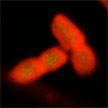 The antibiotic resistance crisis has been ascribed to the overuse and misuse of these medications, as well as a lack of motivation to develop new drugs. In the field of nanotechnology, a variety of innovative materials are being studied to evaluate their potential applications as antimicrobial agents. Recently, researchers have shown that boron nitride nanosheets as a nano-antibacterial agent displays antibiotic-like activities and BN nanosheets were found to show potent antibacterial efficiency in five multidrug resistant bacteria strains.
The antibiotic resistance crisis has been ascribed to the overuse and misuse of these medications, as well as a lack of motivation to develop new drugs. In the field of nanotechnology, a variety of innovative materials are being studied to evaluate their potential applications as antimicrobial agents. Recently, researchers have shown that boron nitride nanosheets as a nano-antibacterial agent displays antibiotic-like activities and BN nanosheets were found to show potent antibacterial efficiency in five multidrug resistant bacteria strains.
May 17th, 2022
 The 1T polymorph of TaS2 is one of the prominent members of the quasi-2D van der Waals materials that reveal several charge-density-wave (CDW) phase transitions in the form of resistivity changes and hysteresis. However, despite numerous attempts, the electrical gating of the CDW phase, which is needed for many practical applications, has remained elusive - until now. Researchers report electrical gating of the CDW quantum phases in h-BN/1T-TaS2.
The 1T polymorph of TaS2 is one of the prominent members of the quasi-2D van der Waals materials that reveal several charge-density-wave (CDW) phase transitions in the form of resistivity changes and hysteresis. However, despite numerous attempts, the electrical gating of the CDW phase, which is needed for many practical applications, has remained elusive - until now. Researchers report electrical gating of the CDW quantum phases in h-BN/1T-TaS2.
 Subscribe to our Nanotechnology Spotlight feed
Subscribe to our Nanotechnology Spotlight feed





